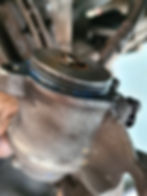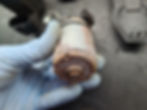BMW Electronic Parking Brake Failure
- Team Vebo
- Oct 20, 2021
- 2 min read
Updated: Oct 23, 2021

Ever been advised against using your BMW F10’s Electronic Parking Brake (E-brake) as it may malfunction and leave your car in an error state? In this article, we’ll explore the E-brake’s function and mechanisms so that you can make an informed decision to use or not to use the E-brake.
Before we dive into why it doesn’t work, it’s best to understand the difference in parking brakes available.
Conventionally, a handbrake works by exerting tension on a cable that connects to a car’s rear brakes. Depending on your car model, the pulled handbrake squeezes the pads to the discs or it would exert force into the brake shoes, thus holding the car in place.

While an Electronic Parking Brake (E-brake) works on the same principle, an electric brake actuator will be activated by pulling a switch. You’ll know the brake works in an F10 when you hear the whirring sound from the brake actuator and the parking brake sign on the dashboard.

What happens when you do not use the E-brake at all? Many things can actually happen. In the case study of this F10, an owner had not used the E-brake for 2 years, yet the actuator’s internals started to rust, resulting in a brake failure. Here are some photos of the dismantling procedure.

First, the rear wheels are removed to access the brake system.

Once the wheels are removed, the caliper and discs are in clear view. This allows easy access to the E-brake, which sits right behind the brake caliper housing.



Once detached from the calipers, the brake actuator can be removed.

Based on the brake caliper housing photo above, our readers may notice the presence of an O-ring. It acts as a sealant to prevent moisture from entering the internals of the actuator.

Here’s an example of a deformed and hardened O-ring (top) and a brand new one (bottom). A brand new O-ring will properly seal the brake actuator. When this O-ring fails, the internals will rust, resulting in a failure.


It can be seen from the photos above that this F10 brake actuator is badly rusted. The rust caused the motor failure and thus contributed to a premature failure.
Let’s take the brake actuator apart and see the mechanism inside. The video below shows the internal components of the brake actuator and how it functions.

Since it is possible for the brake actuator O-ring to deform over time, it is possible that moisture may enter the actuator causing the motor to rust and eventually seize. We shall leave you, the reader, to decide if the E-brake should or should not be used. It is however a good idea to check your E-brake when you're replacing your rear brake pads and if required, replace the O-ring simultaneously.



